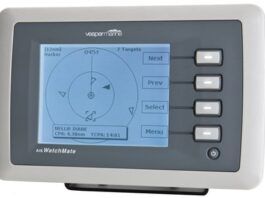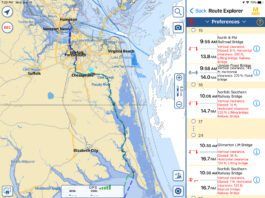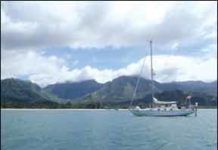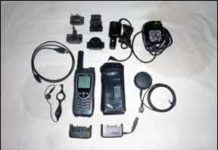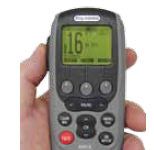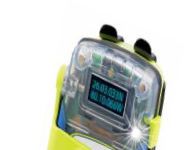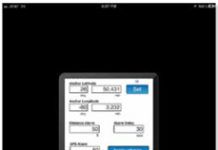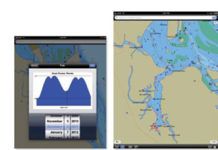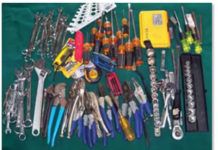Where Credit Is Due: April 2013
About six months ago, I bought a Raymarine Smart Controller remote for my autopilot. It is a great unit that I have come to depend on, especially when single-handing. The Smart Controller plugs into the SeaTalk system and serves as a wireless remote for the autopilot. The weak point in the system is the lightweight lanyard. Recently mine gave way, and the remote bounced twice toward the rail, hung in mid-air, then disappeared overboard. You can imagine my anguish after failing to retrieve it. I contacted Raymarine (www.raymarine.com) and told them my story. I guess it was my lucky day: Long story short, they sent me a new one! Im a huge Raymarine fan now.
DeLorme inReach vs. Iridium Extreme
There are numerous portable marine electronics that can keep you connected while you get away from it all. But which device offers the most features-tracking, two-way communication, location sharing, etc.-at the best price? And which one can be counted on in an emergency? We began our look at these personal electronics with the January 2013 review of BriarTeks Cerberus Cerberlink and the SPOT Connect. This month, we evaluate the DeLorme inReach, another pocket-sized, satellite communication option for the cruising sailor, as well as the Iridium Extreme 9575 sat phone, which is capable of providing worldwide voice communication.
Plotting Your Escape in the Age of Satcom
I wanted to try a little experiment this week. Something safe, with little risk of getting hurt. Something I could do while drinking coffee and listening to Puccini . . . or the Rolling Stones . . . or Mumford and Sons. Something on the Internet. It got off to a bad start. I dropped in on one of those Internet forums where angry people wait to spring on innocents like me. The deeper I dug, the angrier they got.
A Look at PLB Battery Life
While Practical Sailor editors and readers are excited about messaging features and new “smart” technologies being added to personal locator beacons (PLB) such as the AquaLink View 406-MHz GPS, we were concerned that these extras would come at the expense of the device’s primary purpose. Would the repeated use of a PLB emergency device for non-emergency functions deplete its battery and inhibit its function as an emergency locator? Testers ran the AquaLink through its paces and enlisted the help of an independent lab to determine how non-emergency use affected the PLB’s battery life and other emergency functions.
Remote VHF Mics Test
Remote microphones for fixed VHF radios are great tools for both coastal and bluewater sailors, but they can be essential for shorthanded crews. Practical Sailor rounded up and tested six units, each designed to work with two or more compatible, fixed-mount marine VHF radios. The test field included the latest wired and wireless remote mics from Icom, Standard Horizon, Raymarine, and Garmin. To select the best VHF remote mic, testers considered performance, audio systems quality, user-friendliness, features, durability, and ruggedness.
Is the SEND Device Message Loud and Clear?
Sometime around 1:30 a.m. April 28, while participating in the Newport-to-Ensenada Race, the Hunter 437 Aegean sailed directly onto the rocky cliffs of North Coronado Island off Mexico’s Pacific coast. Fellow racers came upon pieces of the boat and reported their findings to the U.S. Coast Guard. The bodies of three crew were discovered with the wreckage. The body of the captain was recovered 16 days later. Contrary to news reports stating there “was no sign of distress” aboard Aegean, an SOS distress call went out from one of the crew—but by the time the Coast Guard learned of it, it was too late. Someone sent a distress alert form the captain’s personal SPOT Connect, a portable satellite emergency notification device (SEND) that delivers SOS messages and vital information—ship’s position and user identity—via Globalstar satellites to a third-party emergency call center.
Useful and Fun Nautical Apps for iPad
In the February and March 2012 issues, we looked at navigation software that allows sailors to use the Apple iPad as a functional chartplotting device. With more than 140,000 apps available, there are hundreds more apps suitable for onboard use. Testers tried out more than 400 weather apps, knot-tying apps, several just-for-fun apps—like Trip Lingo Pirate Edition—and apps for document storage. This report covers more than two dozen of our most used and favorite sailing-related iPad apps.
PS Sea-trials the iPad and Nav Apps
With many of the 38-million-sold iPads winding up on board boats, it’s no wonder there are hundreds of iPad apps that are well suited for the sailing life. This begins Practical Sailor’s three-part series on those apps. Part 1 of the series reports on PS’s field tests of multiple navigation apps—using raster and vector charts—to see how well they perform and how they compare to traditional navigation software. They review looks at the top performers: iNavX, iPad Navionics, and Charts & Tides.
USCG Safety Alert Concerning DSC-equipped VHFs
Most of today’s fixed VHF marine radios come equipped with Digital Selective Calling (DSC) capability, and many high-end handheld VHFs do as well. For years, Practical Sailor has recommended that buyers select a model with this capability—and for good reason: As the U.S. Coast Guard’s new marine radio network Rescue 21 becomes operational, rescue centers are able to receive instant distress alerts from DSC-capable VHF radios. However, spending the extra money to have a feature-loaded, DSC-capable VHF offers little benefit if you do not have the radio properly registered and set up. The Coast Guard recently issued a safety alert, warning that mariners were endangering their lives and those of their crew by having a DSC-capable VHF that lacks identifying information.
Chandlery: August 2011
Practical Sailor Chandlery: August 2011. This month reviews a tiller, tool toter, and smart-phones.
































